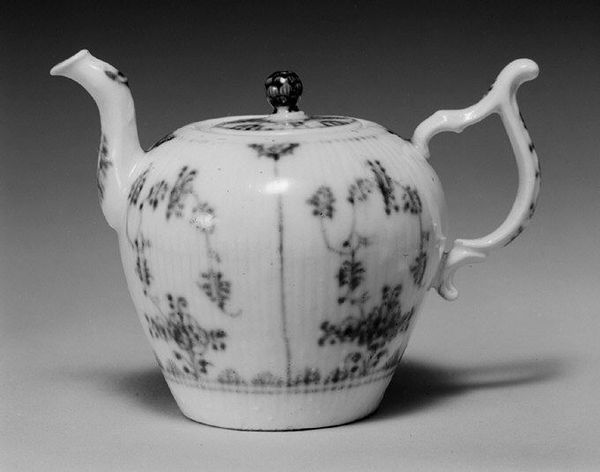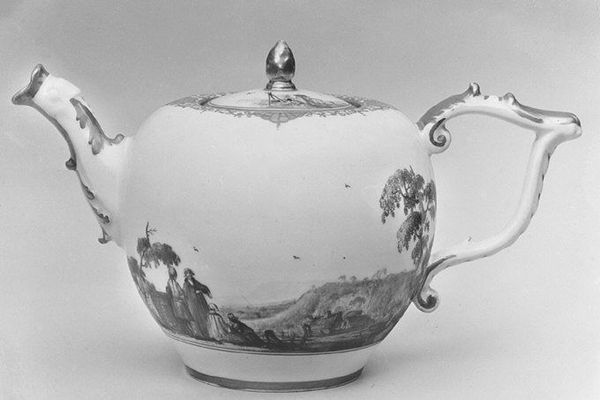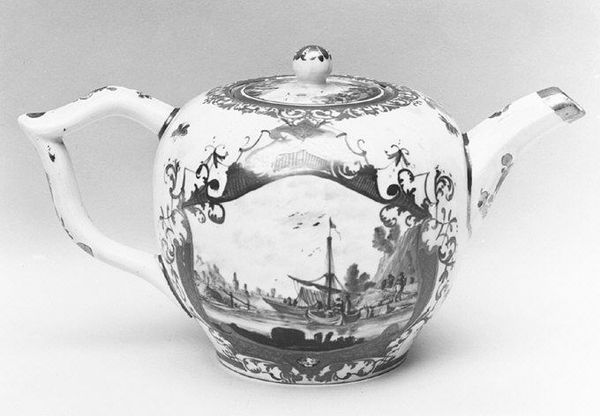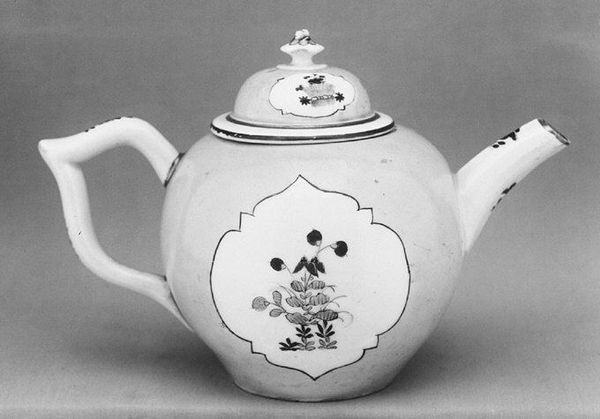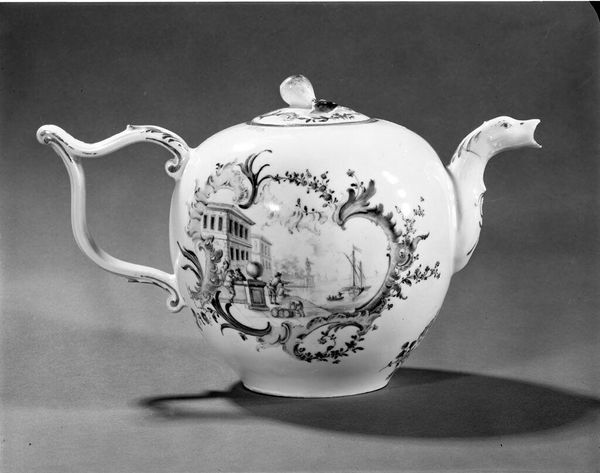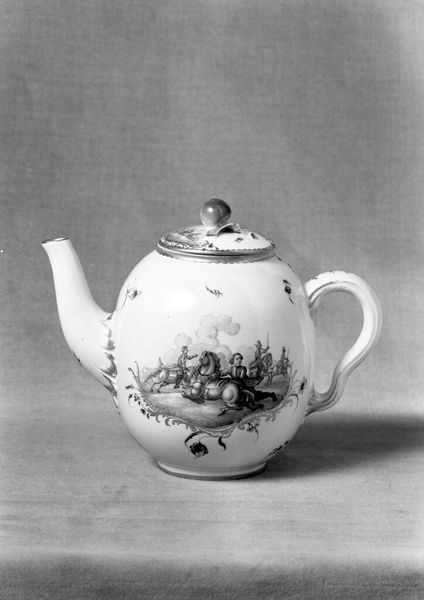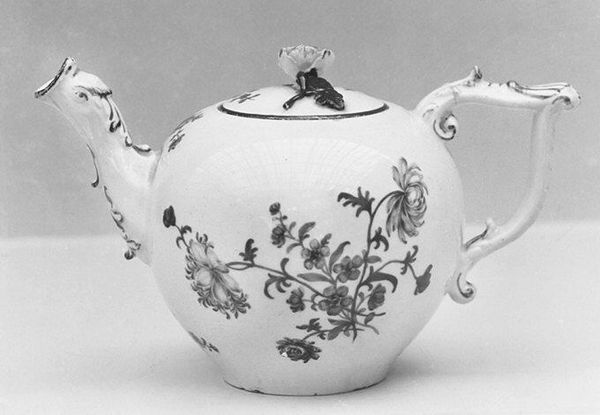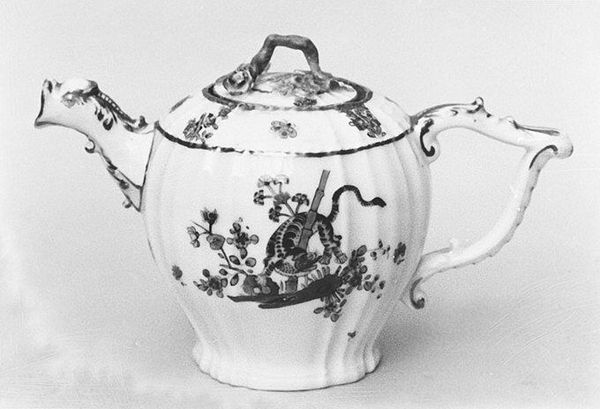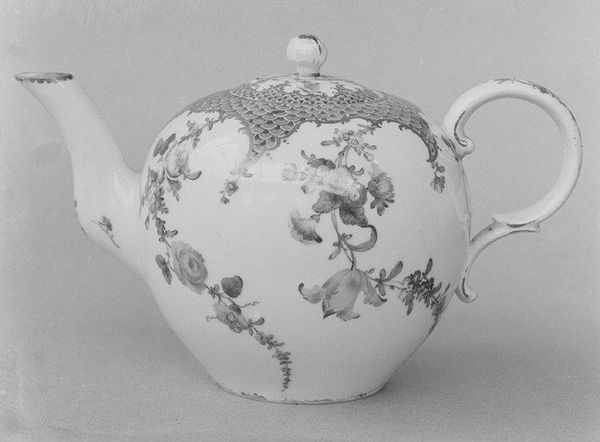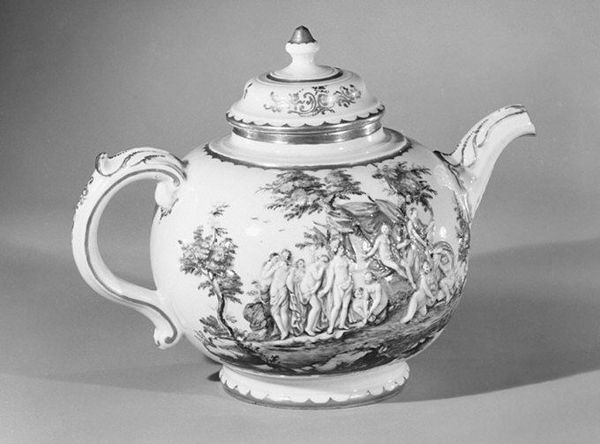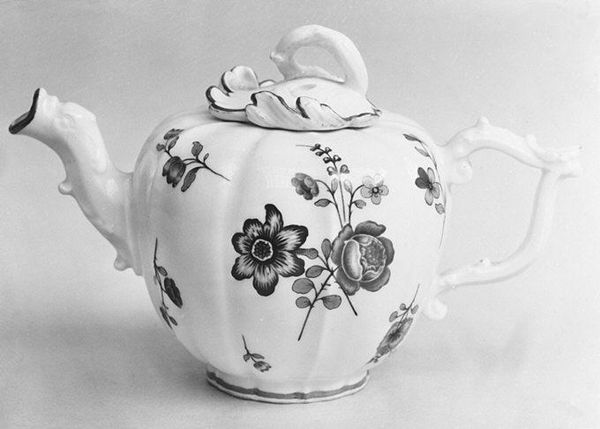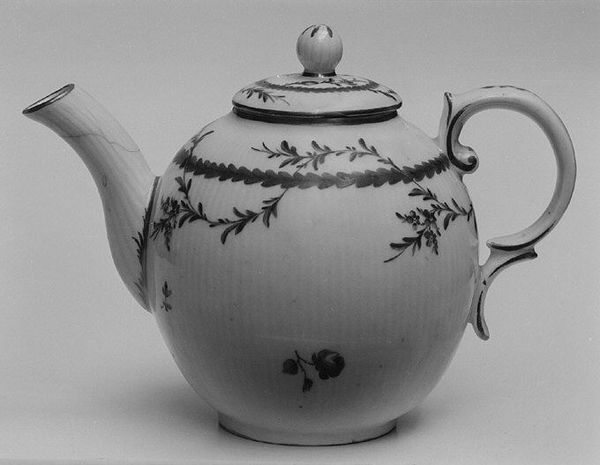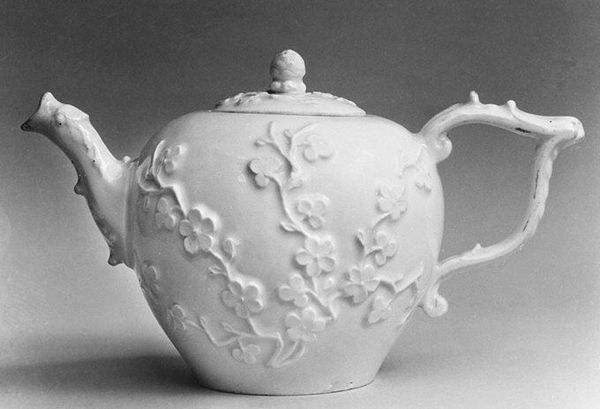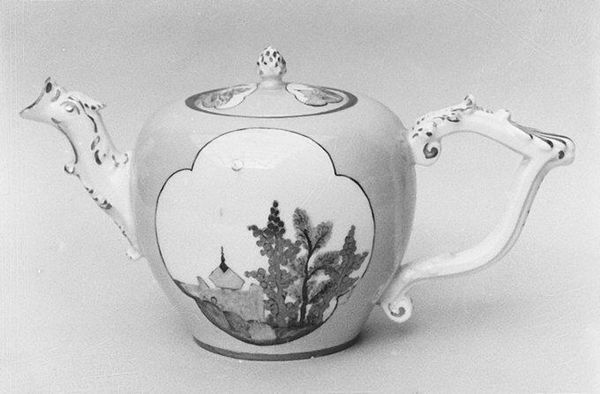
ceramic, porcelain, sculpture
#
ceramic
#
bird
#
porcelain
#
stoneware
#
sculpture
#
decorative-art
Dimensions: Height: 4 in. (10.2 cm)
Copyright: Public Domain
This porcelain teapot was made in Meissen, Germany, a place that held a royal monopoly over porcelain production in Europe during the 18th century. The decoration is fascinating because it reflects a European craze for Asian motifs known as "chinoiserie." We see stylized flowers and a bird that are meant to evoke the East, but they are filtered through a European imagination. Consider the social context: tea itself was an imported luxury, and this teapot would have been a status symbol. The Meissen factory was essentially a state-sponsored enterprise. It employed artists and chemists to unlock the secrets of porcelain, and its products were closely tied to courtly culture. By appropriating and transforming imagery from other cultures, the factory created objects that spoke to the global aspirations of European elites. Objects like this teapot invite us to consider the complex interplay of trade, cultural exchange, and artistic production in the 1700s. By studying trade routes and factory records, we can better understand the social life of this beautiful, yet complex, object.
Comments
No comments
Be the first to comment and join the conversation on the ultimate creative platform.
